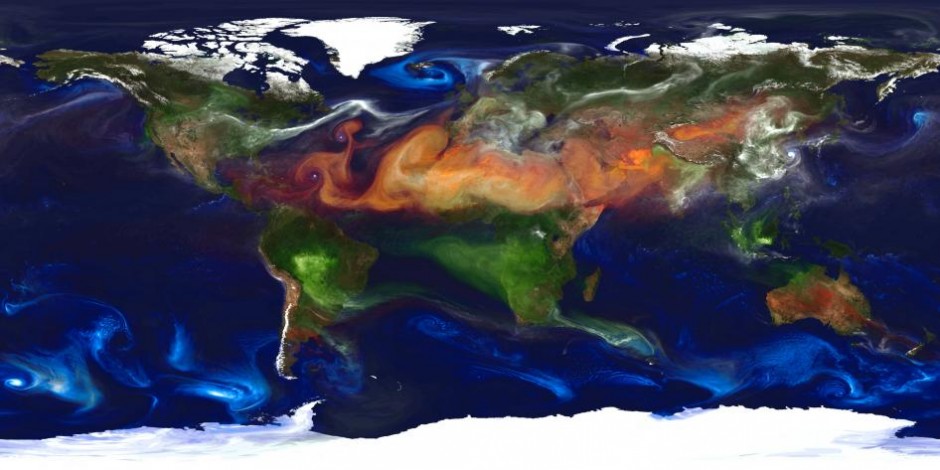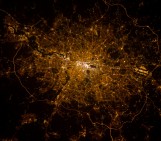My fourth and fifth days at the AGU Fall Meeting involved dashing between multiple sessions to take in a number of talks on (surprise, surprise) aerosols! The main strand running through them from my point of view was how there are major efforts to construct large datasets of aerosol properties that can be used to test our understanding via numerical models.
Aerosols are complex and tend to stick around in the atmosphere for hours-to-weeks, rather than years-to-centuries. This means that they are spatially very diverse and also vary with time e.g. with the passage of seasons. This presents a challenge for our understanding but by constructing large datasets, it can also be used to constrain our numerical models.
For example, by looking at years of winter data for European pollution we might find that our models represent this quite well but it might be that there are significant errors when we look at the summer. This information is useful and might point us towards places to study further and improve our understanding. Just looking at a global annual average, this information is lost.

Image of the global aerosol distribution produced by NASA. The image was produced using high-resolution modelling by William Putman from NASA/Goddard. The colours show the swirls of aerosol particles formed from the numerous sources across the globe. The colours show aerosol particles as dust (gold/brown), sea-spray (blue), biomass burning/wildfires (green) and industrial/urban (white).
There were several talks detailing efforts to build satellite data sets of aerosol properties over long periods and use these to assess numerical models. Phillip Stier from the University of Oxford sounded a cautionary note by illustrating how different satellites can sometimes deliver different results for certain properties. He showed three different satellite images of cloud effective radius, which is a property of clouds that is important for how they interact with sunlight, and they were all very different. One of them agreed with his model but which set of measurements do you believe? He ended with a call to expand initiatives that seek to collate data from surface and aircraft measurements to test satellite measurements and models.
Dan Murphy from the National Oceanic & Atmospheric Administration paper presented some work on trends in aerosol over the past decade. He showed that while at a global level, the amount of aerosol in the atmosphere hasn’t really changed, it has changed significantly at the regional level. Aerosol concentrations have decreased in the USA and Western Europe, while they have increased in East Asia and in the Middle East. Aerosol has moved around a lot but there has not been a discernible change in their radiative effect at the global level. However, he said we couldn’t rule out that aerosols haven’t caused other adjustments such as circulation changes and clouds. You can access his Nature Geoscience paper on his work here. His work is consistent with several other papers that have shown negligible trends in global aerosol after the past decade.
These were highly interesting talks and should serve us well as we attempt to improve our understanding of aerosols, although there is much work still to do. No doubt we can anticipate much more work on this in the future – one of the talks did proclaim that:
Aerosol reanalysis is trendy.
No doubt we’ll be seeing the influence of this in the fashion houses of London, Paris and New York soon.

